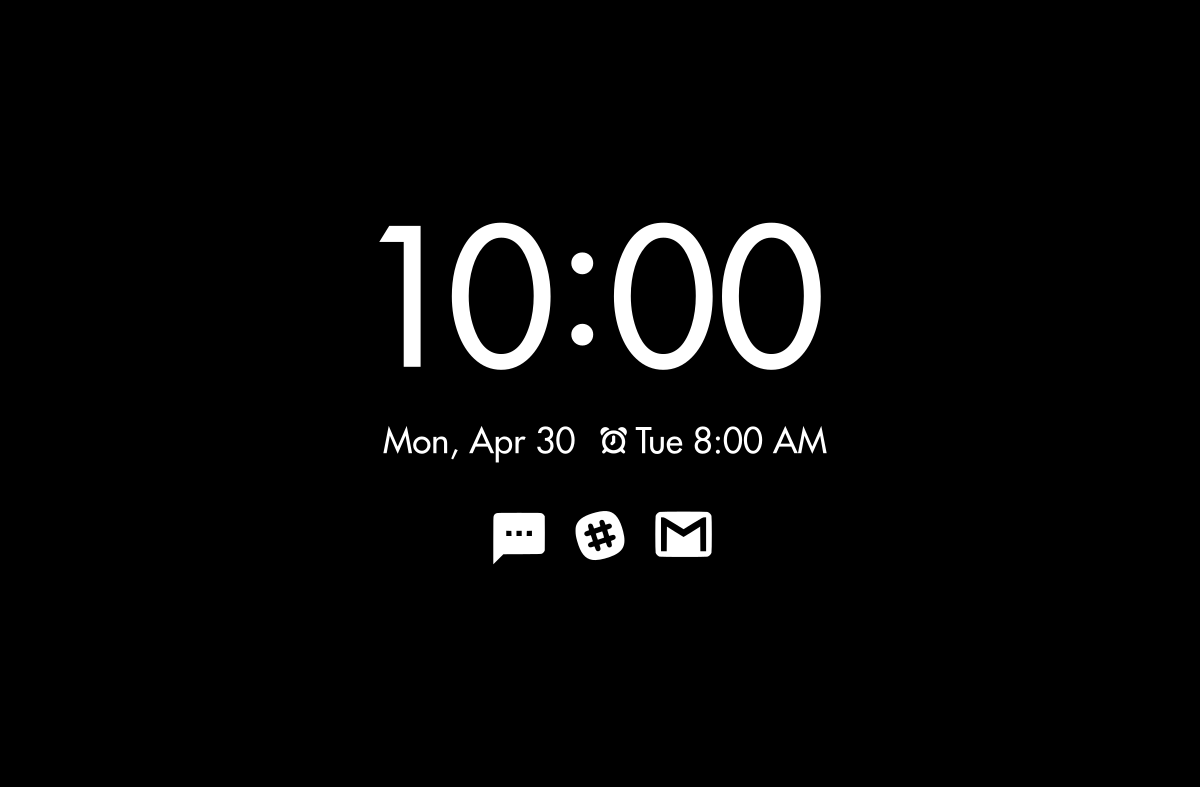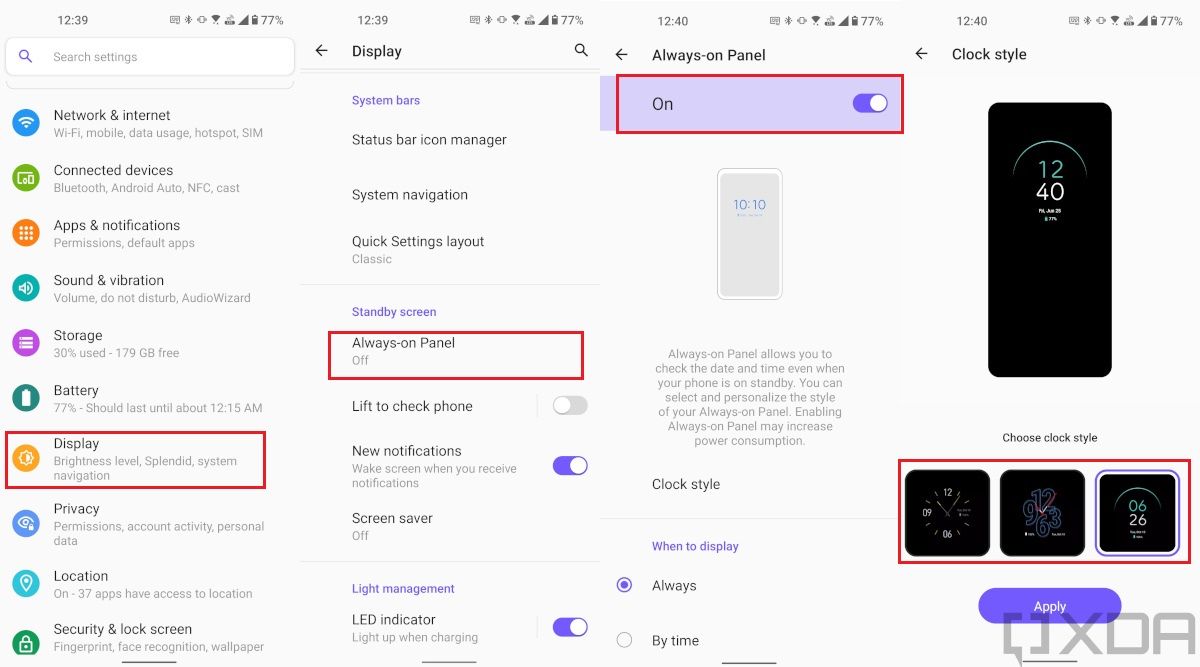Quick Links
The Always on display feature has been a part of Android phones for a long time now. It was first introduced by Samsung, but many have followed since then. You even get it on a lot of mid-range phones now, which is great. This feature, in case you don't know, shows the clock and some other useful information on your phone's screen all the time. It essentially takes advantage of the OLED panels on phones these days to light up only pixels needed to show you the clock and other notifications, while keeping the rest of the display completely off. So there's no significant impact on the battery life, even when the display is technically "always on" to show you relevant info.
Most phones, as we mentioned earlier, ship with this feature out of the box, but you can enable it on devices that don't have it too. Here's a step-by-step explaining how to enable and use the always-on display feature on your Android phone:
We don't recommend using this feature on phones with LCD panels, as they're not capable of producing true blacks as AMOLED panels do. LCD panels will essentially keep the entire display turned on all the time, which is not good for both the phone's battery life and its display's longevity. Not to mention, a fully lit LCD panel on your phone can also be quite distracting.
How to enable Always On Display on ASUS phones
It's easy to enable AOD on ASUS phones running ZenUI. We used a ZenFone 8 running ZenUI 8 to show you the steps and the screenshots, but they should largely remain the same on older versions of ZenUI too.
Here's how to enable it on ASUS phones:
- Open the Settings app on your phone.
- Tap on Display.
- Tap on Always-on Panel.
- Tap the toggle at the top to enable the feature.
- Tap on "Always-on" at the bottom.
How to enable always on display on OPPO/Realme/OnePlus phones
OnePlus resisted adding an always-on display feature to their phones for quite a while, but they finally caved into user demands and added the feature with the release of the OnePlus 9 series. Here's how you can enable it on OnePlus' current version of OxygenOS:
- Open the Settings app on your phone.
- Select Wallpapers & style.
- Locate the Always-on display option and select it.
- Toggle the switch to enable the feature.
As you can see in the screenshots embedded above, OxygenOS also gives you additional options to customize the always-on display.
All OnePlus, OPPO, and Realme phones run the same software with just some minor tweaks, you should be able to follow the steps to enable the always-on features depending on which one you have.
How to enable always on display on Pixel phones
Google's Pixel phones also have the always-on display feature now, and here's how you can enable it:
- Open the Settings app and go to Display.
- Look for the Lock screen option and tap it.
- Inside the lock screen menu, look for an option named Always show time and info, and enable the toggle next to it.
How to enable Always On Display on Samsung phones
Samsung phones pioneered this feature since it was first introduced with the Samsung Galaxy S7 series in 2016, and as long as you have a compatible panel, you should be able to take advantage of it. Here's how you can enable it:
- Open the Settings app and locate the Lock screen option.
- Once you're in, look for the Always-On display option, and tap it to see the option to enable and customize it.
How to enable Always On Display on Xiaomi phones
Xiaomi devices running MIUI 12 and featuring AMOLED panels will be able to enjoy Always On display on their phones as well, and it's pretty straightforward to enable. Here's how to do it:
- Open the Settings app and tap on Always-on Display and Home screen.
- Customize the style by tapping on the Style option.
- Once that's done, enable it by toggling on Always-on display.
If you're not satisfied with the AOD themes that come pre-loaded on your phone, you can check out more on the MIUI Theme store.
What if my phone doesn't have the feature?
There are several apps that provide similar, or better, functionality to the ones that are included with several devices. These apps can be used on any device -- even the ones with an LCD panel.
One of the best apps is "Always On AMOLED" by Tomer Rosefield. It has over 10 million downloads and offers features such as auto-movement to prevent burn-in, Tasker and Greenify integration, backgrounds and wallpapers, quick note-taking, and much more.
Of course, getting a third-party app always has downsides compared to official options. Particularly, these apps require the "draw over other apps" permission just like lock screen replacement apps do. That isn't bad by itself, but it does mean that it's slower, heavier, more resource-demanding, and a potential security issue compared to a feature that you turn on in the Settings app.
The always-on display feature is pretty much just the natural evolution of the "ambient display" that was so popular on Motorola phones several years ago. It eventually trickled down to stock Android as well. It's a handy feature that tells you the time and gives you a quick look at your notifications, without having to unlock the phone. And the fact that it's "always on", and doesn't rely on your movement to light up the pixels makes it that much more convenient to quickly check the time or see if you have a notification from any of your favorite or important apps.
What do you think about this particular feature? Do you use it on your phone or do you find it distracting? Let us know by leaving a comment below.


